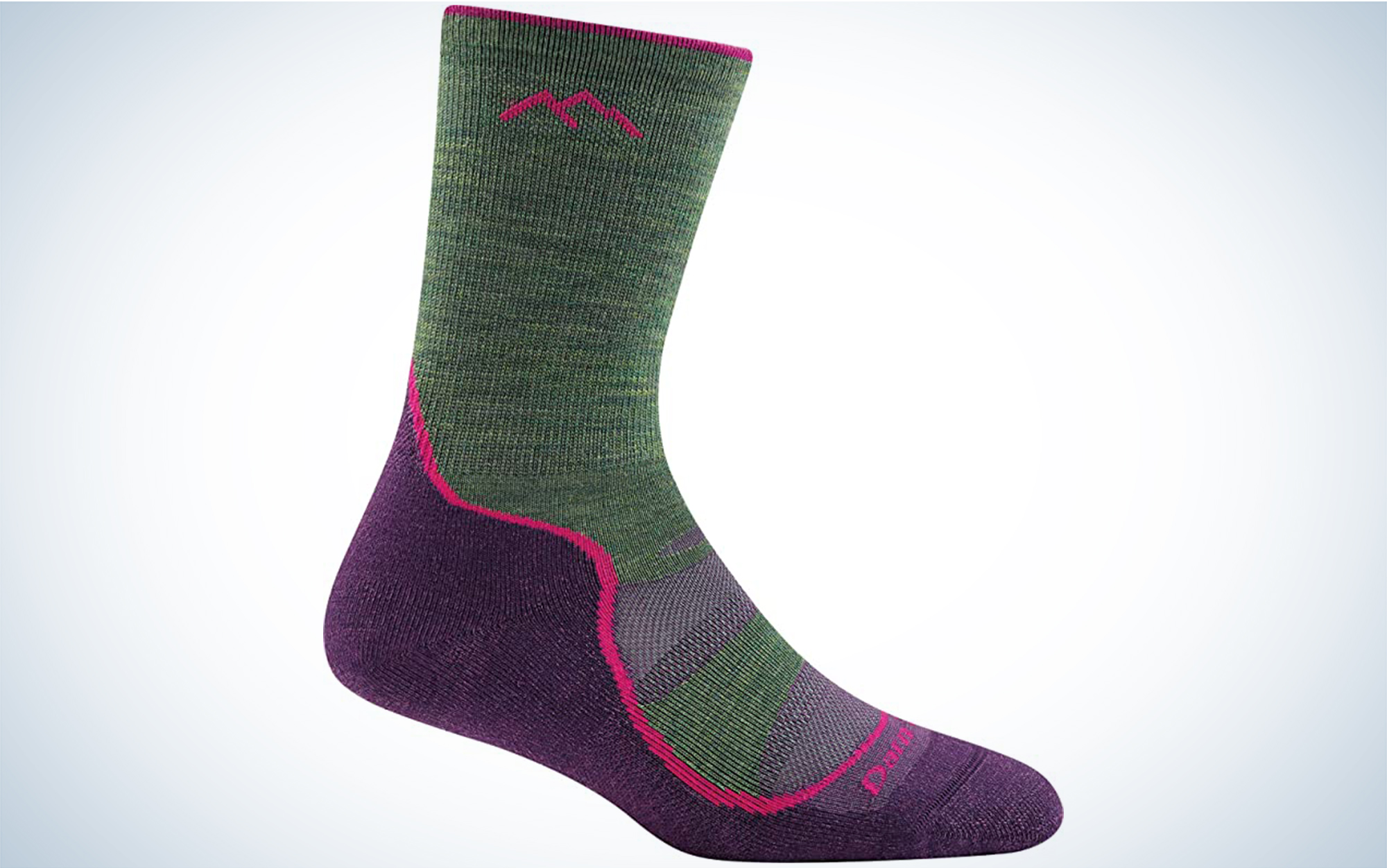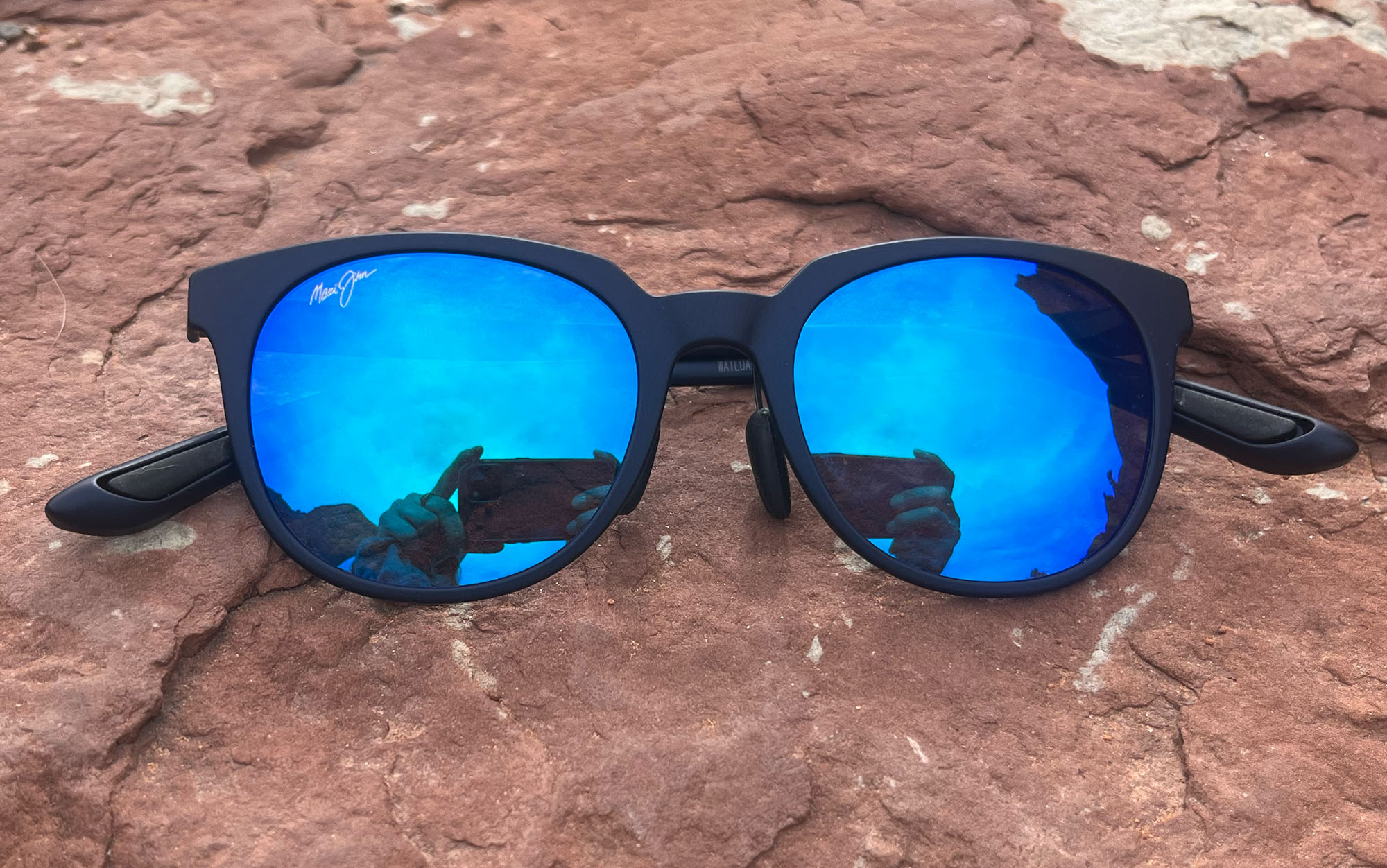We may earn revenue from the products available on this page and participate in affiliate programs. Learn More ›
What to wear hiking may sound like a simple proposition. And in many ways, it is. Anyone can go for a hike in shoes, pants, and a shirt. But plenty of people get in trouble each year by hiking in the mountains, desert, or rolling forests without the right clothing. Fortunately, some easy tips can keep you safe, whether you’re a hiking newbie or veteran. I talked with Maggie Peikon from the American Hiking Society and combined her recommendations with tips I’ve picked up while hiking and backpacking around the globe. Take the time to figure out what works best for you, because wearing the right gear on a hike helps ensure you come home safe and want to go back for another.
Why it Matters What You Wear Hiking
Is cotton cozy at home? Sure, but it can also be downright dangerous in the wrong conditions on a hike. The oft-repeated survival phrase is true: Cotton kills. The material absorbs sweat and keeps it plastered to your body. Then instead of staying at a steady internal temperature, your body works overtime to try and keep warm.
“I used to wear cotton cammies on all of my hikes, and they would make me soaking wet and cold,” Peikon says. “I swapped them out with moisture-wicking layers and it has made hiking much more enjoyable.”
Similarly, while flip flops might be great for the beach, or cheap canvas tennis shoes might be fine for walks around your neighborhood, neither will keep your feet safe and comfortable on a rugged trail.
But don’t think about what to wear hiking as an overly complicated challenge, just remember that certain fabrics work better in certain situations. And planning ahead matters.
Plan Your Base Layer
Think about dressing for hiking in layers, starting with the clothes closest to your skin. What each of us wants closest to our bodies is about as personal a decision as they come, but you should still think about a few recommendations. As Peikon learned on her hikes wearing cotton undershirts, start with a base layer that wicks. Also think about wearing a base layer that fits close to your body and doesn’t chafe. This is the layer most likely to rub, so be extra conscious of how it hugs your shape.
Then think about the kind of material you’re wearing. Wool blends, and synthetics like polyester or nylon, are the most common fabrics that keep moisture away from your body. But many companies are branching out into other materials like bamboo and biodegradable polyester. Outdoor Life’s Laura Lancaster spent a year testing and reviewing the best base layers and recommends a number of options from the best ones for hot weather (Free Fly Bamboo Lightweight Hoodie) to the best budget option (32 Degrees Heat Lightweight Baselayer). Check out her review of those and more here.
Don’t Forget a Mid Layer
Once you have the most comfortable, moisture-wicking clothes like wools or polyester blends for your first layer, consider what goes on next. If you’re hiking in Florida in the middle of summer, you will need something different than the Colorado mountains during shoulder season. But you’ll benefit from a mid-layer in both places.
“Mid-layers will provide heat,” Peikon says. “You might wear multiple mid-layers, which gives you more flexibility so you can take things off and put them on.”

While this layer isn’t the one closest to your skin, you should still avoid cotton. Consider layers like fleece and an insulated puffer coat. Vests are also a great way to keep your core warm and give your arms more space to move. (Outdoor Life’s Ashley Thess recently tested the best heated vests.)

Also consider how well this layer will hold up in brush or rubbed against tree branches. While you may have an outer layer (more on that one soon), you also may not. Wear pants (read our best hiking pants review here) and a jacket (check out the best hiking jackets this year) that won’t snag if you’re bushwhacking.
Bring Rain Gear
By far the easiest layer to forget is a waterproof one. We’ve all been there. The cloudless sky beckons us outside for a long hike, so we throw on some comfortable hiking clothes and leave the car. But a couple hours later, miles away from a vehicle or our home, a storm rolls in, the temperature drops, and suddenly we’re huddled under a rock overhang wondering when it will stop. Getting caught in a frigid afternoon storm without the proper attire can be downright dangerous. Fortunately, wearing rain gear will turn that potentially hazardous situation into a muddy, but harmless, hike in the rain.
Almost every major brand offers rain coats, from affordable ones to pricey Gore-Tex. Outdoor Life sent a reviewer into the Alaska woods for the ultimate test of best waterproof rain gear for hunting. These options upheld the worst we could give them, so will hold up for you, too.

Also don’t forget rain pants. While the most important piece is probably a rain coat, keeping your legs (and also ultimately feet) dry and warm is smart for safety and comfort. The best waterproof hiking pants according to our reviewer for men is the Marmot Men’s Precip pants. The best for women is the Columbia Women’s Storm Surge pants. But we also outline an options including those for someone on a budget (Frogg Toggs Bull Frogg pants). For those of us who also need waterproof pants for hunting, try the Sitka Downpour pants.
Protect Your Feet
Finding a good pair of hiking boots or shoes is not always an easy endeavor. And it can be a pricey one. But if you’re going to invest in one nicer item for your hikes, think about investing in good foot wear.
“You need boots you’re comfortable in with good tread that are sturdy with some ankle support,” Peikon says.
Some people prefer heavy-duty hiking boots, others like trail runners. What you need depends on the terrain. Are you backpacking in rugged wilderness or hiking on smooth trails in the foothills outside your town? Are you going to be slopping through puddles and wet grass or spending most of your time in the desert? Think about your needs and then make a decision from there. We tested and reviewed the best minimalist shoes for hiking and trail running, the best hiking shoes and also the best waterproof boots to help you make the most informed decision.
Many people overlook gaiters, which can be a really efficient way to keep snow, water, brush, and sticks out of your boots and off your ankles. Companies make a remarkable variety, so check out our best picks here.
Remember to break in whatever boots or shoes you plan on wearing. Brand new boots can result in agonizing blisters miles from the trailhead.
Think About Socks
“The fabric of your socks really does matter a lot,” Peikon says. And she would know. She’s hiked and backpacked around the world in every condition imaginable. So trust her when she says cotton socks are one of the fastest routes to sweaty feet and blisters.
As with the base layers you wear on your top and bottom, your feet also need a moisture-wicking material like wool or synthetics. Today’s Merino wool has the added benefit that it’s soft and doesn’t retain odors.
Check out the best hiking socks for everything from managing moisture to the most comfortable. Also find the best hiking socks on a budget.
Peikon also recommends double socks, ones that come with two layers to minimize rubbing which often leads to blisters.

Remember Hats and Gloves
Whether it’s chilly when you head out in the morning or will cool off before you finish at the end of the day, make sure you think about protecting your head and hands. If you’re somewhere it could get cold, consider a winter hat best suited for the condition. We offer our take on today’s best winter hats including the best beanies for running, for women and even the biggest splurge. If you’re headed out somewhere hot and sunny, like the deserts of the southwest or flats of the southeast, you’ll likely want a hat that keeps the sun off your face and deflects some heat from the top of your head. (Find our list of the best fishing hats here.)

Your hands are also important to protect from the elements. Do you need a waterproof glove? We got you covered. Are you going to be scrambling over rocks or trail running? Do you want a liner or one, great, overall pair of gloves? We break down all the options in this best gloves for hiking review.
Protect Your Eyes
One of the last items to consider when you’re wondering what to wear hiking is a good pair of sunglasses. They not only stave off headaches from too much sun, but also to protect your eyes from dirt, dust, and other airborne objects.
OL’s Thess exhaustively tested almost a dozen sunglasses in the desert and mountains to outline the best ones for your next adventure. Consider, for example, the Tifosi Seek 2.0 if you’re going to be running, the Maui Jim Wailua if you’re looking for something ultralight, the Costa Coleta if you want a great, overall pair of glasses, or the Goodr Everglades if you’re on a budget. You won’t regret heading out with glasses that protect eyes from whatever the outdoors may bring.
Bring Trekking Poles
While trekking poles don’t fit directly into the category of what to wear hiking, you could consider them as important to your comfort and safety as a piece of clothing. I never used to use hiking poles. I was strong and agile enough to get where I needed to go without the aid of a pole. But the more I hiked and backpacked—especially with a heavy pack—I realized their utility isn’t just for the older hikers among us.

Hiking poles keep you stable on uneven terrain. They can also take some of the brunt of a heavy pack off your ankles, knees, and hips. They can also help you cover more ground, faster. And some, like the Gossamer Gear LT5 Carbon Trekking Pole, will even help you pitch a tent. We recommend the Leki Makalu FX Carbon pole as the best overall one. But you could also consider the MSR Dynalock Explore Backcountry Pole as the most versatile, the Black Diamond Pursuit Shock as the best for day hikes and the Zpacks Minimalist Trekking Pole for, well, when you need something a bit more minimalist.
Do your future-self a favor and invest in poles that protect your joints and keep you safe on the trail.

Final Thoughts on What to Wear Hiking
What we wear at any given time is an incredibly personal decision, but when it comes to being outdoors, it’s also one that can stand in the way of a positive experience. Wear the wrong clothes, you could be uncomfortable at best and in real trouble at worst. And while options for what to wear hiking seem endless, it’s not too hard to narrow down what suits you best.
Lastly, once you dress to meet the occasion, don’t forget to bring a backpack to hold some of those layers when they’re not needed, safety gear, extra food, and a water purifier.




